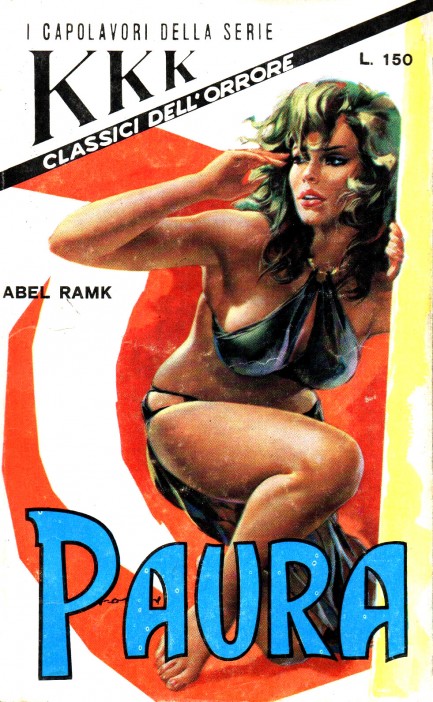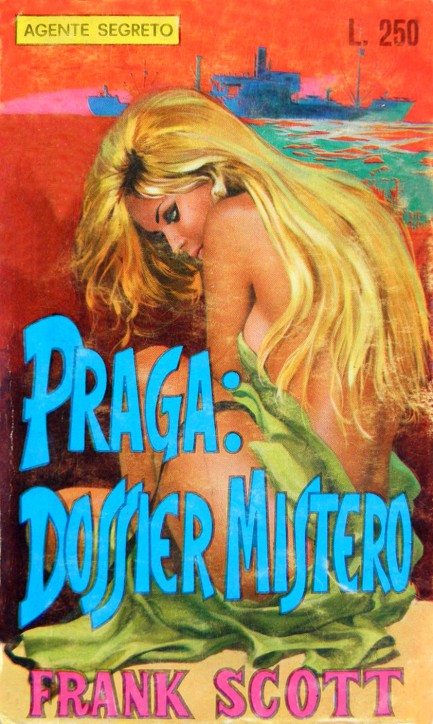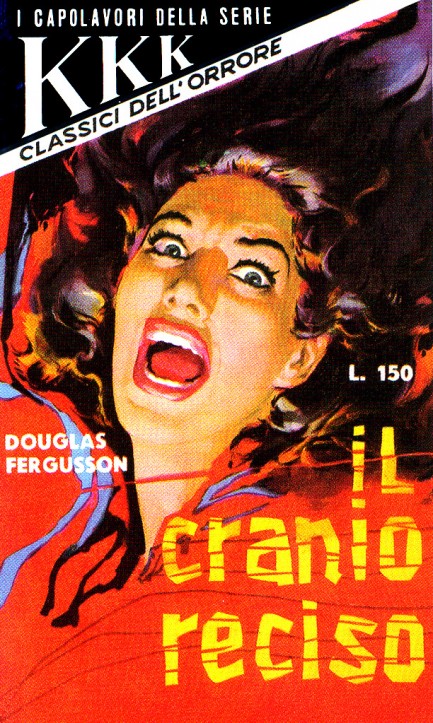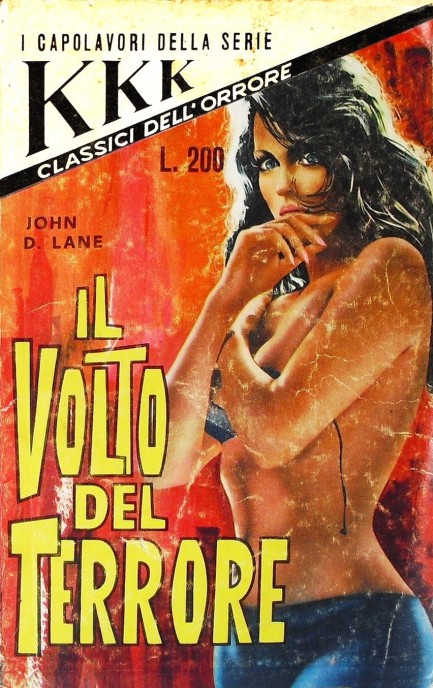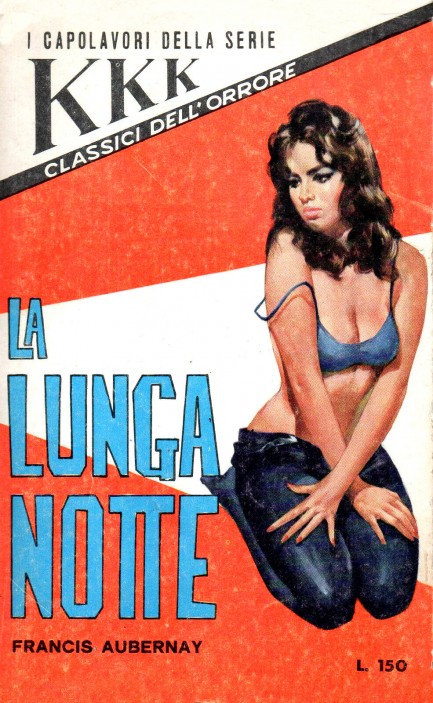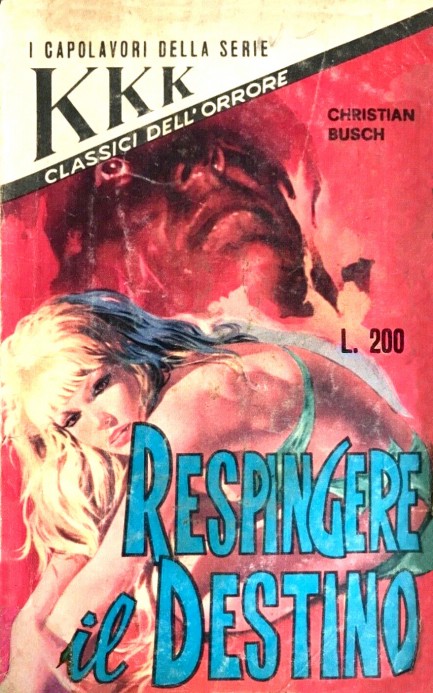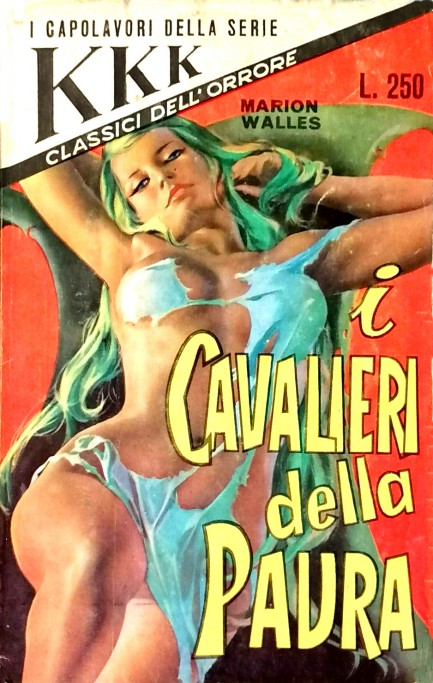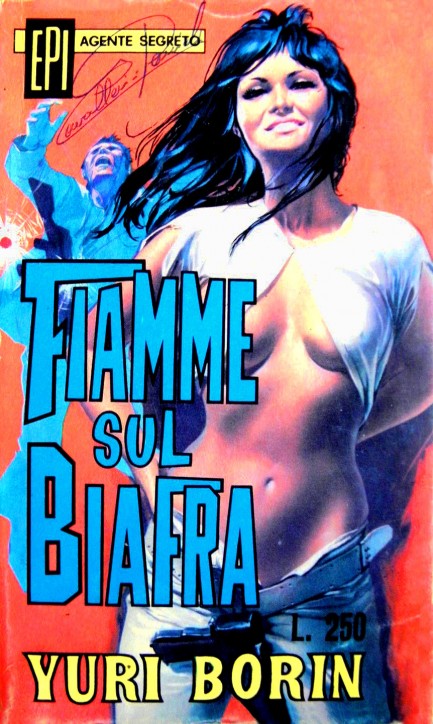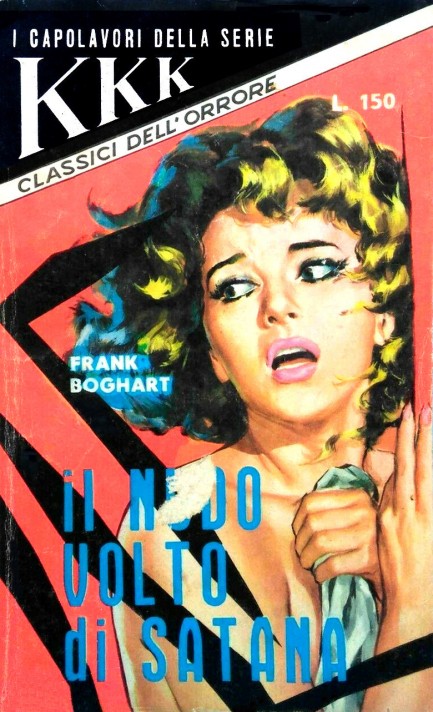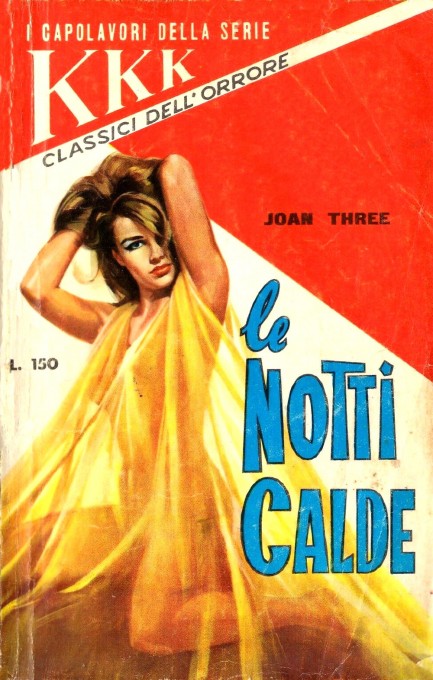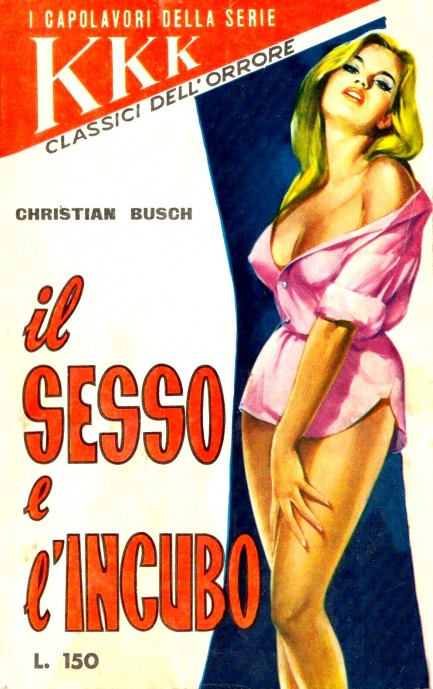 When you go out can you pick me up some Visine or Blink-n-Clean? My eyes are killing me. 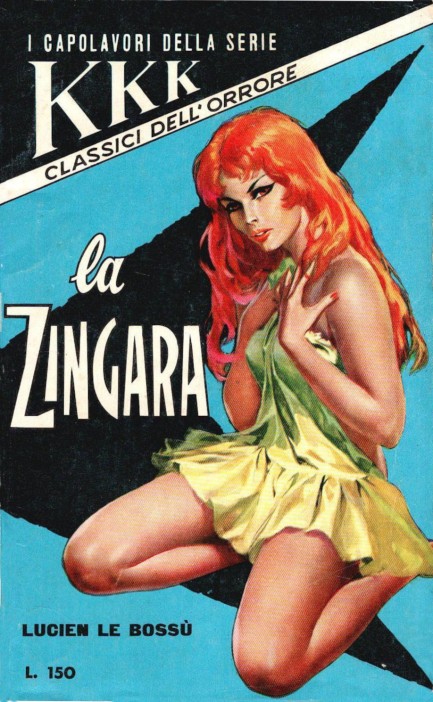
This is wonderful work from Italian illustrator Benedetto Caroselli, fronting Lucien Le Bossù's La zingara, which is number fifty-two in Grandi Edizioni Internazionali's series I Capolavori della Serie KKK Classici dell’Orrore. “Zingara” is Italian for gypsy, and this one has red hair and red eyes, which is not the first time Caroselli went this route with one of his women. The author here, Le Bossù was actually Renato Carocci, who wrote scores of books under too many pseudonyms to list, with this one coming in 1965. Caroselli was prolific, as well. If he didn't paint more covers than anyone else in Italy during the 1960s, he certainly came close.
 Most guys would sell their soul for someone this hot. 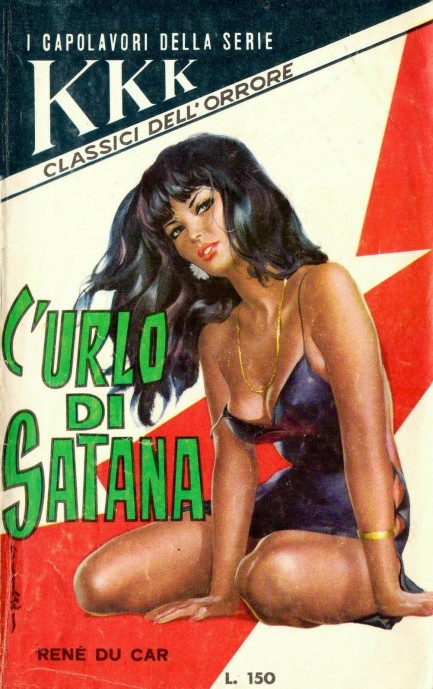
The 1965 horror novel L'urlo di Satana, the title of which means “the scream of Satan,” is number twenty-five in Rome based publisher Grandi Edizioni Internazionali's series I Capolavori della Serie KKK Classici dell’Orrore. It's credited to René du Car with a translation from French by Renato Carocci, but when GEI made such attributions what it really meant was that the translator wrote the book under a pseudonym. So this was actually written by Carocci, just one of scores of novels he produced under a long list of names. The art on this is another brilliant effort from Benedetto Caroselli, who we've documented extensively over the years. To see everything you can click his keywords below, or, if you're pressed for time, you can skip to our favorites here, here, here, here, and here.
 I'll run for help! Have you seen my red slingback pumps? 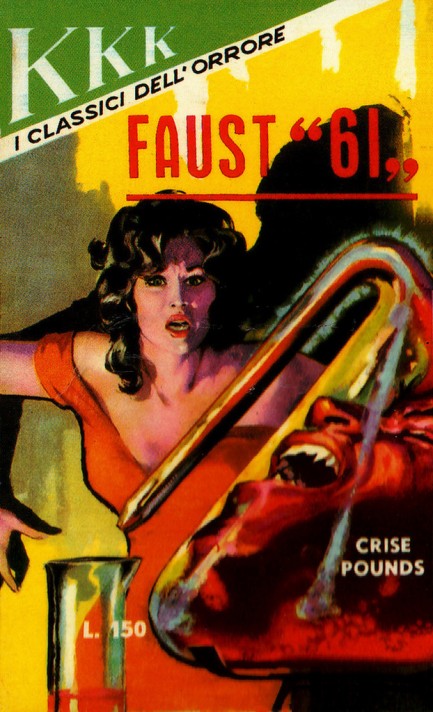
Our ongoing showcase of Italian artist Benedetto Caroselli continues with the above cover for Crise Pounds' novel Faust “61,” a horror update of the classic German folk legend. It was published in 1961 by Grandi Edizioni Internazionali for its series I Capolavori della Serie KKK Classici dell’Orrore. Pounds was a pseudonym used by Maria Luisa Piazza, who wrote three other novels for Grandi Edizioni Internazionali. Caroselli's cover work here shows his command of both subject matter and color. And fashion, as his stylish bystander looks on in terror.
 Where there's a will-o'-the-wisp there's a way. 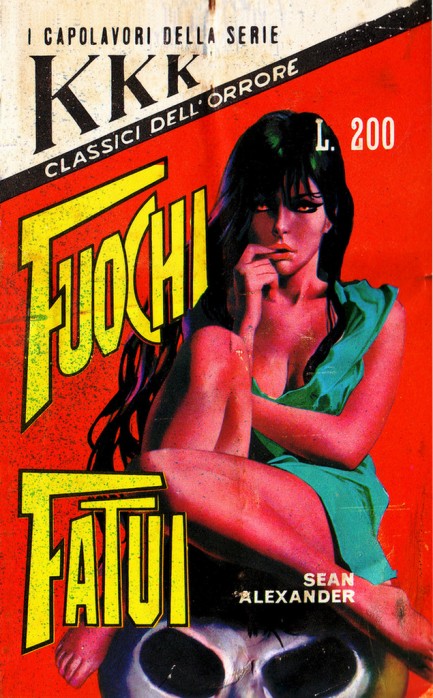
We probably should have shared this cover from Grandi Edizioni Internazionali's series KKK Classics around Halloween, because it's a bit scary. Then again, maybe now is better, because Christmas is possibly even a little scarier. The art here, from Benedetto Caroselli, has a red-eyed cover figure sitting atop what is supposed to be a giant skull, which, again, is a bit scary. However, if you look at it the right way she could be sitting on a giant nose. Again, possibly even scarier.
Inside the book you get two tales—the introductory “Welcome to Blackstone, Mister Clift,” by Silvano Alessandrini, followed by the full length title story. Fuochi fatui, by the way, translates as “fatuous fires.” What the hell does that mean? Fuochi fatui are basically analogous to will-o'-the-wisps, alluring lights in the wilderness that prove eternally elusive and lead to frustration and possibly danger. You can fill in your own Christmas shopping metaphor here.
Author Sean Alexander was aka Silvano Alessandrini. The pseudonym thing with French and Italian authors back in the day is a bit strange. Since they were selling to their home markets you'd think indigenous names would be an advantage, but it's clear that the type of mayhem and terror they were going for were thought to be more credible if written by Americans. Which when you think about it is possibly the scariest thing of all. Anyway, the copyright on this is 1969, and it's beautiful.
 “The Thing” that wasn't there. 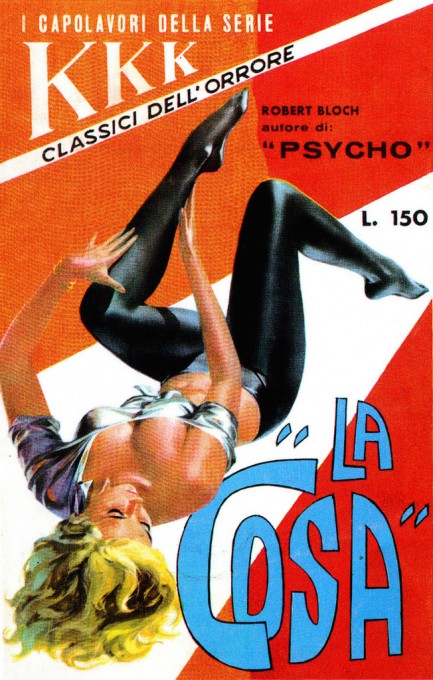
We've shared several covers from Grandi Edizioni Internazionali's horror collection I Capolavori della Serie KKK but this one is kind of special. Translated into Italian by Fernanda Adami, this is a collection of horror master Robert Bloch's early short stories. In case he isn't familiar to you, he wrote Psycho. This book is called La Cosa, or The Thing because Bloch's first story, a piece called “The Thing” appeared in his school magazine in 1932 when Bloch was only fourteen. But guess what? “The Thing” isn't one of the stories in The Thing. Instead the book consists of four tales—“Colui che apre la via,” “Ritorno a Sabbath,” “Il segreto di Sebek,” and “Enoch.” In English these are “The Opener of the Way,” “Return of the Sabbath,” “The Secret of Sebek,” and “Otis.” Just kidding—it's “Enoch.” Lovecraft fans probably already know of the first three stories because they appeared in Bloch's Lovecraft inspired collection The Opener of the Way in 1945 and remain widely read pieces of Lovecraftian lore. So that makes this paperback a bit of a collector's item. As if the great art by Benedetto Caroselli didn't already do that. Yes, he painted a misleading illustration for a horror anthology but Caroselli and Grandi Edizioni Internazionali specialized in that. Want to see a particularly brazen example? Check here.
 This is a mean old world, baby, to live in all by yourself. 
Above, the cover of Gli Amante Perduti, which means “the lost lover,” published 1962 by Grandi Edizioni Internazionali. The author, Horace Robinson, was in reality the prolific Maria Luisa Piazza, and the evocative cover art, showing a woman distressed and alone against a backdrop of blackness, is by the incomparable Benedetto Caroselli.
 Artist C. Renè makes a bold statement in blue. 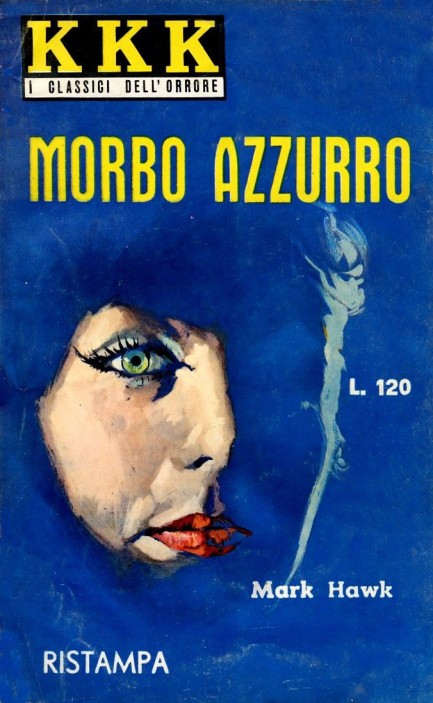
Finally, an Italian horror novel that wasn’t illustrated by the incomparable Benedetto Caroselli. This time the artist is someone billed as C. Renè, and he/she’s created a beautiful blue cover for Mark Hawk’s Morbo Azzurro (Blue Disease), opting to show a very detailed eye and set of lips rather than a whole face. Very effective work, we think. This appeared in 1961 and was a ristampa—a reprint—of a 1960 release.
 You can eat an apple a day but it won’t keep this doctor away. 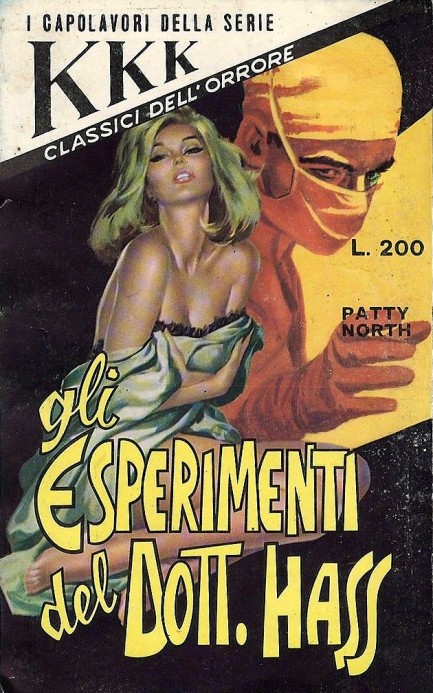
Above is I Capolavori della Serie KKK Classici dell’Orrore number 127, entitled Gli esperimenti del Dott. Hass, aka The Monster, published in 1969, written by Patty North, who was really Franco Marotta. And of course the brilliant art is by Benedetto Caroselli, whose work you probably recognize by now. Marotta also wrote Il robotto maledetto, which means so far he’s written about an evil doctor and an evil robot. The book also has a short story beginning on page 121 called “Violenza,” which was penned by Roland Greaves, who was really Renato Carocci. That’s a lot of entertainment for just a few euros, and well worth it.
 He’s everything a man is, except he turns on only when you want him to. 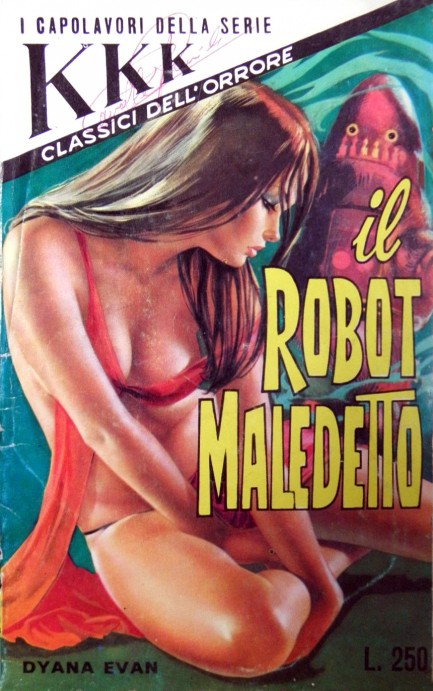
Above, Edizioni Periodici Italiani’s Il robot maledetto, 159 in the I Capolavori della Serie KKK Classici dell'Orrore, written by Dyana Evan, a psuedonym of Franco Marotta, 1971. The art featuring a lingerie clad woman and a phallic robot is more suggestive of romance or sleaze than horror, but it’s great work by Benedetto Caroselli, who you can see more of here.

|
 |

The headlines that mattered yesteryear.
1945—Mussolini Is Arrested
Italian dictator Benito Mussolini, his mistress Clara Petacci, and fifteen supporters are arrested by Italian partisans in Dongo, Italy while attempting to escape the region in the wake of the collapse of Mussolini's fascist government. The next day, Mussolini and his mistress are both executed, along with most of the members of their group. Their bodies are then trucked to Milan where they are hung upside down on meathooks from the roof of a gas station, then spat upon and stoned until they are unrecognizable. 1933—The Gestapo Is Formed
The Geheime Staatspolizei, aka Gestapo, the official secret police force of Nazi Germany, is established. It begins under the administration of SS leader Heinrich Himmler in his position as Chief of German Police, but by 1939 is administered by the Reichssicherheitshauptamt, or Reich Main Security Office, and is a feared entity in every corner of Germany and beyond. 1937—Guernica Is Bombed
In Spain during the Spanish Civil War, the Basque town of Guernica is bombed by the German Luftwaffe, resulting in widespread destruction and casualties. The Basque government reports 1,654 people killed, while later research suggests far fewer deaths, but regardless, Guernica is viewed as an example of terror bombing and other countries learn that Nazi Germany is committed to that tactic. The bombing also becomes inspiration for Pablo Picasso, resulting in a protest painting that is not only his most famous work, but one the most important pieces of art ever produced. 1939—Batman Debuts
In Detective Comics #27, DC Comics publishes its second major superhero, Batman, who becomes one of the most popular comic book characters of all time, and then a popular camp television series starring Adam West, and lastly a multi-million dollar movie franchise starring Michael Keaton, then George Clooney, and finally Christian Bale. 1953—Crick and Watson Publish DNA Results
British scientists James D Watson and Francis Crick publish an article detailing their discovery of the existence and structure of deoxyribonucleic acid, or DNA, in Nature magazine. Their findings answer one of the oldest and most fundamental questions of biology, that of how living things reproduce themselves.
|

|
|

It's easy. We have an uploader that makes it a snap. Use it to submit your art, text, header, and subhead. Your post can be funny, serious, or anything in between, as long as it's vintage pulp. You'll get a byline and experience the fleeting pride of free authorship. We'll edit your post for typos, but the rest is up to you. Click here to give us your best shot.

|
|






